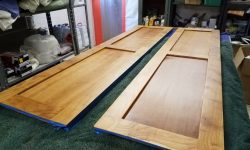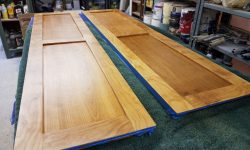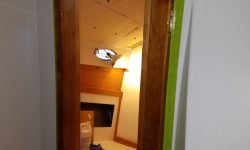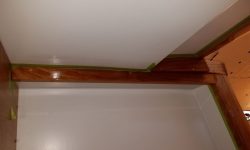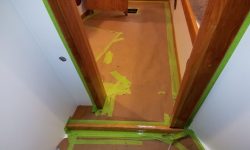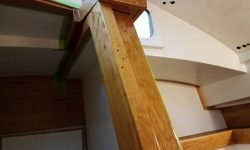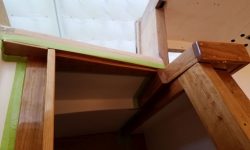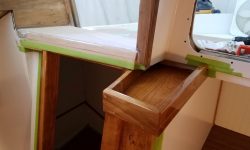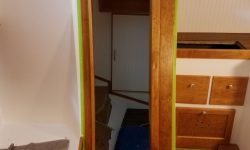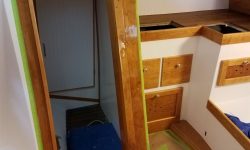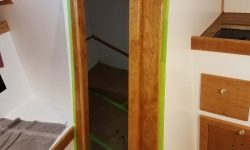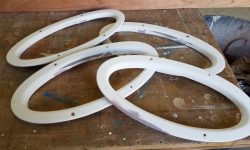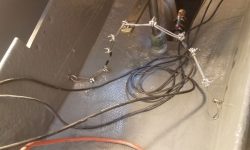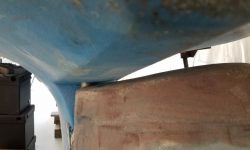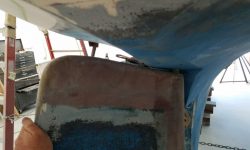June 6, 2019
Scupper 152
Thursday
Now that the first side of the forward cabin doors had had a couple days to cure, I could flip the door over and prepare the second side for the final coat of satin varnish, which I applied once preparations were complete.
In the cabin, I sanded and cleaned the companionway door trim and environs, then applied the 4th build coat of gloss varnish to these surfaces.
The port trim rings required some light sanding to finish up with the minor fairing repairs I’d completed.
Unclamping the mast compression post assembly, I used the table saw to true one glued edge, then planed the blank clean and smooth on all sides, ending up with a square blank about 2-7/8″ on a side. I trimmed the ends and set the post aside for now.
To finish up my simple rudder stop system, which would prevent the rudder from turning too far and hitting the hull (this had caused the damage to the top of the blade that I repaired earlier), I installed a pair of stainless steel cables running between the bronze arm I’d installed on the rudder shaft and the bulkheads on either side of the engine room. To prepare for this, from outside the boat I turned the rudder as far as it should go to one side, and used a little wedge to hold it in place at that position (i.e. the maximum turning angle). Then, working in the after steering room, I installed the cable between new eyebolts on the steering arm and bulkhead, securing the cable as needed with simple U-clamps. These aren’t the sleekest or strongest things out there, but in this instance they’d do the job well and easily and with sufficient strength for the job description. They also allow easy length adjustment should it become necessary.
I finished up one side, then turned the rudder and held it in position on the other side and repeated the process. I originally tried the eyebolts in one of the pre-existing holes near the tops of the bulkheads, but decided to move them to new holes near the bottoms of the bulkheads at the hull when I found that the cable might torque the unsupported tops of the thin bulkheads too much if someone at the tiller pushed too hard against the stops. The attachment was much more secure at the lower, tabbed edges of the bulkheads.
Quite frankly, if someone was truly determined to push the tiller farther past the extent of the cables, I preferred that the cables slip than cause damage to some other more critical component or structure
Not that they would slip, necessarily–but the point is that ultimate cable strength here could be more harmful than not.
With the cables in place, the rudder stopped a comfortable but minimal distance from the corner of the hull on each side.
Total time billed on this job today: 5 hours
0600 Weather Observation: 58°, rain. Forecast for the day: Rain and showers, maybe a thundershower, 71°



